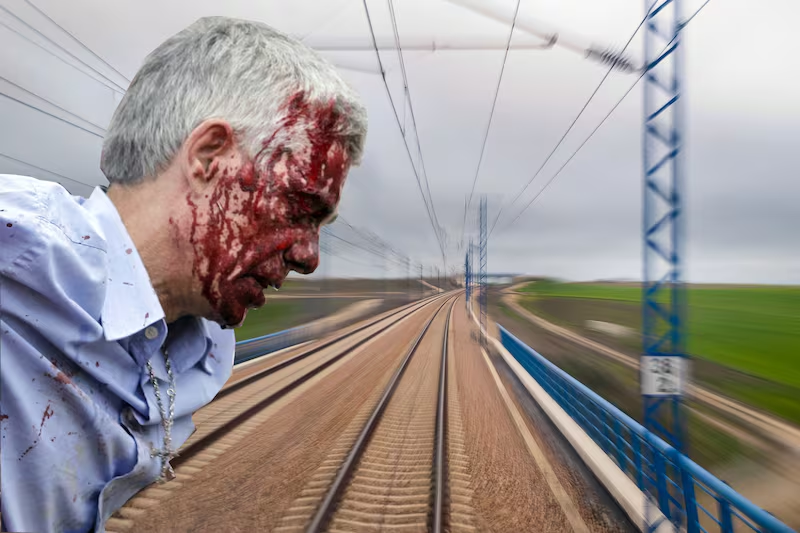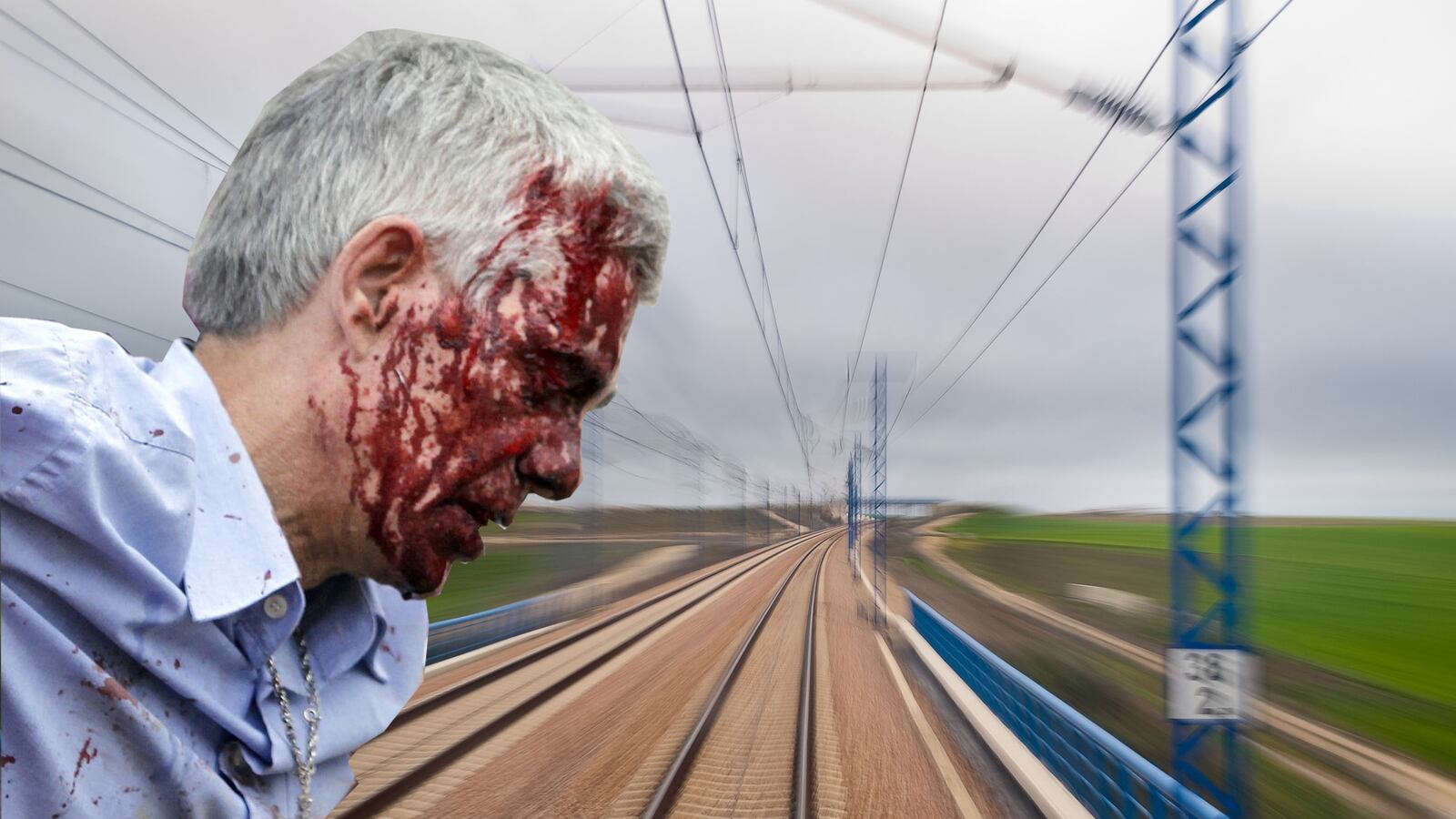Men aren’t doing so great in the spotlight lately.

Anthony Weiner has showcased some of the gender’s baser proclivities. David Brooks says we’re basically a bunch of bums. And now a train driver in Spain has cast light on the deadly combination of our penchant for opening up the throttle with the human reward system.
That driver, Francisco José Garzón Amo, was operating a passenger train that was nearly full because of a feast day for Spain’s patron saint on Thursday. On the section of track where the train derailed, witnesses say gauges showed it was moving at nearly 120 miles per hour, more than twice the speed limit. Security-camera footage capturing the derailment, which can be viewed here is pretty horrifying. Some 78 are dead.
This was not Garzón’s first time pushing limits. According to The New York Times, just last year he uploaded a photo to Facebook of a speedometer registering 125 miles per hour. Despite comments on the page chastising him for going so fast, he apparently kept it up until Wednesday’s derailment.
Garzón’s callous disregard reflects an unfortunate reality of modern life. Thrill-seeking is a powerful and in some cases addictive impulse in some portions of the population. And males are more likely to be reckless drivers, particularly when it comes to speed. The combination, as seen this week and year after year in road fatalities, can be deadly. In 2011, a man drove a children’s train too fast at an amusement park and it crashed, leaving a 6-year-old boy dead. He reportedly told the police he knew he was going too fast.
According to the National Highway Transportation and Safety Administration, “Speeding is one of the most prevalent factors contributing to traffic crashes”; and when crashes result in fatalities, “young males are the most likely to be speeding.” In 2010, there were 10,530 deaths in speed-related crashes (PDF), or 31 percent of all fatalities on the road.
Global numbers are no different. The World Health Organization says that “from a young age, males are more likely to be involved in road traffic crashes than women.” More than 75 percent of car-related deaths involve men.
“[Men’s] overrepresentation in speed-related crashes is yet another example of the risk-taking tendencies of this group of drivers,” said the Governors Highway Safety Association in their Survey of the States (PDF).
That risk-taking tendency is exactly what has caught modern science’s eye.
“Imagine what a rush it would be traveling alongside the Civil Guard, and passing them so that their speed traps go off,” Garzón wrote on that same Facebook post last year.
“The supposition is that fear” creates a rush from a release of neurotransmitters like endorphins and dopamine, and leaves some with a sense of exhilaration or happiness, says Michael Davis, a retired neuroscientist from Emory University who specialized in fear. Those neurotransmitters are also associated with drugs like cocaine and methamphetamine, and likewise, thrill-seeking for some people can be quite addictive.
Even more dangerous for the rest of us: those disposed to thrill-seeking also tend to have short-circuited decision-making skills. In the journal Psychological Science, psychologists Jane E. Joseph, Xun Liu, Yang Jiang, and Thomas H. Kelly of the University of Kentucky along with Donald Lyman of Purdue University tested sensation-seekers and their conclusion was quite compelling: “Individuals high in sensation-seeking not only are strongly activated by exciting, thrilling, and potentially dangerous activities, but also may be less likely than other people to inhibit or appropriately regulate that activation.”
While the science does not excuse the behavior, it helps to explain why somebody like Garzón, despite his decades of experience, would risk so many lives by going so fast, or why year after year fatalities related to speeding remain painfully high.
Thrill-seeking, and the chemical processes pushing humans toward it, is powerful. It can be a source for good—it pushes humans to new heights (literally), attempt things like the Red Bull Stratos, and funds the scary-movie industry. But as in the case of Garzón and too many men on the road, it can also be quite deadly.






